When your plane is ready to board, your airline notifies you when and from what gate. When your takeout order is ready, the restaurant let’s you know to come to the door for pick up. When you’ve been paid, your bank account will flip you a quick update.
Notifications are a type of operating system—an operating system that connects us with the services we rely on every day. For an ever-increasing number of businesses, they are an essential connection to their customers. At WWDC this year, Apple announced significant changes to how notifications will look, and critically, how they will be delivered on iOS 15 devices.
Below, we outline the four changes Apple is making to notifications from delivery, to presentation, plus discuss new on-device intelligence that ranks notifications by relevance, context, and amount of user interactions, and how all of this will affect brands.
A New Design for Notifications
Notifications have been redesigned, adding contact photos for people and larger icons for apps that make them even easier to identify. The rich notification presentation and accompanying actions have been updated too.
This means it will be harder for brands to break through the noise on mobile devices where notifications are easily identified, and more easily swiped away.
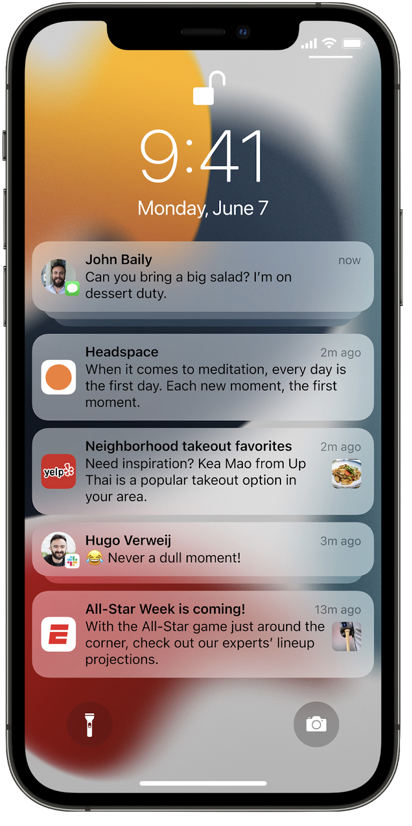
Notification Summaries
To combat distraction from the continuous stream of notifications and alerts, a new notification summary collects non-time-critical notifications for delivery at scheduled times, such as in the morning and evening, and groups them together in a neat summary.
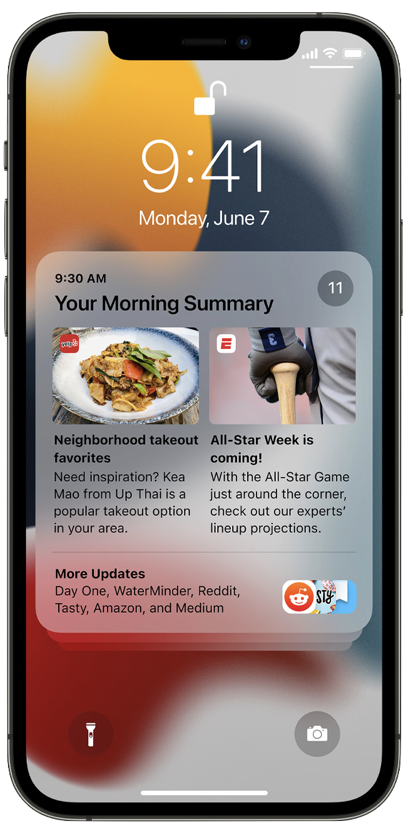
To be successful, brands just ensure their notifications are top of the summary list, and app engagement will be essential for this, with notifications from a user’s most used apps taking top priority. Rich media attachments help too, as well as a new relevance API that will impact ranking. In the below example, we can see that ESPN is ranked highest.
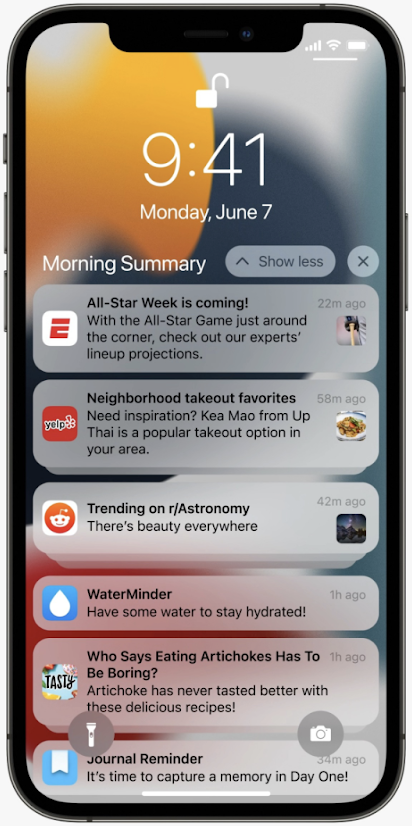
To Focus, or Not to Focus
In 2018, Apple introduced Screen Time in a vain hope to shame people into using their devices less by showing them just how much time they spent on screens. With iOS 15, Apple will deliver new tools to help users focus and reduce distraction. Focus is a new feature that filters notifications and apps based on what a user wants to focus on, and acts as a more refined execution of Do Not Disturb.
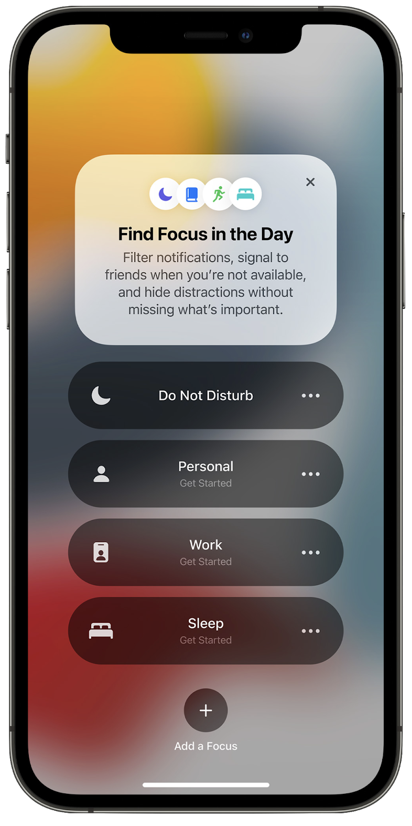
Users can set their device to help them be in the moment by creating a custom Focus or selecting a suggested Focus based on their context, like during their work hours or while they’re winding down for bed. In an aim to reduce the amount of interruptions during the working day, only Mail and Messages will be allowed to send notifications, along with direct communication from coworkers. Users can also create Home Screen pages with apps and widgets that apply to moments of focus to only display relevant apps and reduce temptation.
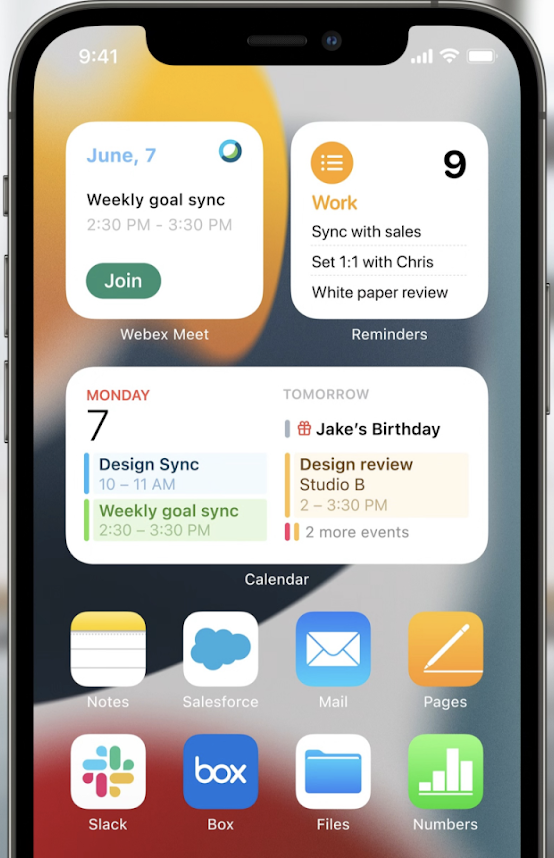
Focus will greatly impact which applications can send interruptive notifications and when, making it essential for brands to deliver notifications that are relevant and contextual to individual users.
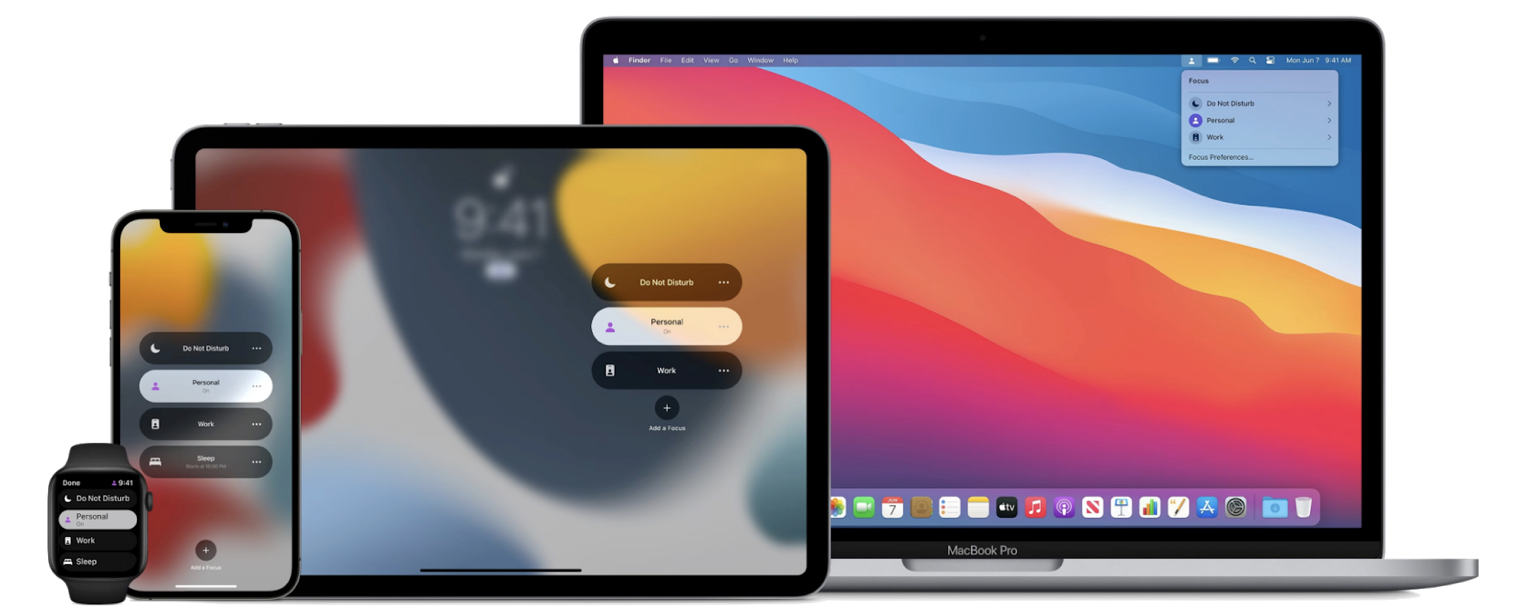
An Interruption API
To determine how notifications are delivered, a new API allocates an interruption level for all notifications: Passive, Active, Time Sensitive, and Critical.
Passive
Notifications with Passive interruption levels do not alert or light up the screen, and do not break through notification summary and Focus. Apple suggests notifications such as dining recommendations should use passive.
Active
Active interruption resembles today’s behaviors, where notifications will play sound and vibrations and light up the screen. They don’t break through system management of notifications. Examples include Sports updates.
Time Sensitive
Time Sensitive notifications alert act like active notifications, but they do break through notification summary and Focus. Examples would include account security and package delivery alerts.
Critical
Critical notifications breakthrough system controls, and also bypass the ringer switch on the device. Use cases for critical notifications are severe weather and local safety alerts.
Three Takeaways
The changes with Notification Summaries, Focus, and ranking by interruption importance will impact many brands. It will be harder to break through.
To quote Apple “Using on-device intelligence, notifications are arranged by priority, with the most relevant notifications rising to the top, and based on a user’s interactions with apps. ” If your message is relevant, your notifications will rank. If your messaging is irrelevant, to the back of the long, long line you go.
In-app channels will become ever more critical. Invest in in-app message centers, in-app overlay messaging, and embedded messaging experiences.




